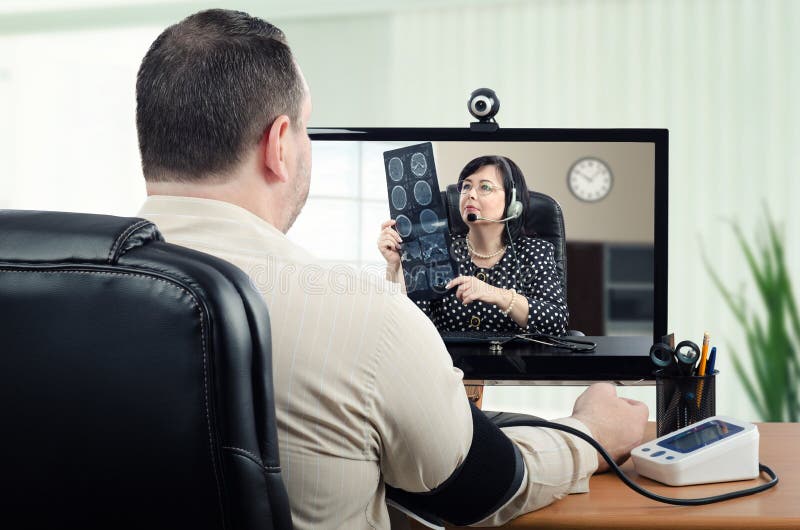Leading Teledoctors Providers for Convenient Online Healthcare
Leading Teledoctors Providers for Convenient Online Healthcare
Blog Article
Checking Out the Conveniences and Difficulties of Teledoctors in Modern Health Care
As the medical care landscape evolves, teledoctors have emerged as an essential component in connecting voids in clinical gain access to and effectiveness. Exactly how can the medical care sector balance these benefits with the intrinsic difficulties?
Expanding Access to Treatment
Telemedicine has actually arised as a critical innovation in modern health care, substantially broadening access to look after varied populations. By leveraging electronic technology, teledoctors have actually transformed the standard medical care distribution design, making it possible for patients in underserved or remote areas to obtain timely clinical consultation. This development is especially advantageous for people staying in country communities, where the shortage of healthcare centers and experts commonly results in delayed or inadequate therapy.
Teledoctors are crucial in linking the space created by geographical obstacles. Through online consultations, individuals can access a vast array of healthcare solutions without the need for substantial traveling.
The combination of teledoctors right into healthcare systems also supports the administration of public health dilemmas by facilitating rapid response and triage. During pandemics, as an example, digital assessments lower the problem on physical healthcare centers, minimizing exposure threats for both patients and healthcare companies. As telemedicine continues to evolve, it assures to improve the landscape of medical care ease of access, making it more inclusive and effective.
Cost-Effectiveness of Teledoctors
The cost-effectiveness of teledoctors is a substantial variable driving their widespread fostering in healthcare systems. By minimizing the requirement for physical facilities and in-person visits, teledoctors supply an even more inexpensive alternative to standard health care distribution.
Furthermore, teledoctors promote a more effective use of medical care sources by minimizing unneeded emergency clinic gos to and medical facility admissions. Patients can access timely consultations for small disorders or follow-up treatment, which aids to reduce the worry on overstretched health care centers. This efficiency not just leads to set you back savings for doctor however additionally decreases the economic stress on patients who may otherwise deal with costly medical facility expenses.
In addition, teledoctors can assist in handling persistent illness much more successfully by offering constant tracking and timely interventions. This aggressive technique can avoid difficulties, therefore decreasing long-lasting treatment expenses. Overall, teledoctors offer a practical solution to the intensifying expenses of medical care, while preserving high quality treatment shipment.
Enhancing Person Ease
While cost-effectiveness plays a pivotal function in the rise of teledoctors, enhancing patient convenience stands as an additional compelling advantage of this medical care model. With the integration of teledoctors, people can bypass the generally time-consuming process of organizing and going to in-person consultations.
Furthermore, teledoctors offer versatile organizing, enabling individuals to arrange assessments at times that finest suit their personal and professional commitments. This flexibility is very useful for individuals balancing requiring job routines or household duties, making certain that health care can be incorporated perfectly into their lives. In addition, the capacity to accessibility doctor from the comfort of one's home can bring about enhanced client engagement and adherence to therapy plans, as the barriers to seeking care are decreased.
The benefit given by teledoctors not only improves the patient experience but likewise contributes to a more receptive and efficient medical care delivery system, inevitably supporting far better health and wellness end results.
Dealing With Privacy Issues
Amidst the expanding adoption of teledoctors, personal privacy worries arise as a substantial factor to consider. As medical care increasingly relies on digital platforms, guaranteeing the privacy of client information becomes paramount. The digitization of medical documents and the use of telecommunication innovations necessitate robust safety actions to shield delicate data from unapproved accessibility and violations.
Health care carriers have to stick to rigid policies, such as the Wellness Insurance Transportability and Liability Act (HIPAA) in the United States, which establishes nationwide requirements for protecting clinical info. Compliance with such regulations is critical in keeping client trust and guaranteeing their data is managed sensibly. Security of data, safe and secure communication channels, and routine audits are some of the actions that can be carried out to boost information protection.
Cybersecurity risks are progressing, and medical care organizations need to remain attentive to brand-new vulnerabilities. Furthermore, enlightening both patients and healthcare carriers concerning best methods in information personal privacy is essential.
As teledoctors end up being a lot more indispensable to healthcare delivery, resolving privacy concerns is vital to make certain both the efficiency and trustworthiness of these services.

Browsing the Digital Separate
Bridging the digital divide is an essential challenge in the widespread adoption of teledoctors. teledoctors. This divide includes disparities in accessibility to digital technology, specifically among rural, low-income, and senior populaces. These teams often lack the required gadgets, trusted internet connectivity, or digital literacy required for effective involvement in telehealth services. As a result, the benefits of teledoctors-- such as boosted access and ease-- continue to be inaccessible for several people that can most take advantage of them.
Initiatives to alleviate this divide demand Recommended Reading a multi-faceted strategy. Policymakers must focus on framework growth to enhance net accessibility in underserved locations. Additionally, initiatives to support modern technology for low-income families can play a crucial function in making sure equitable accessibility. Doctor and neighborhood organizations should work together to offer electronic literacy programs, empowering individuals to navigate telehealth systems with confidence. Additionally, developing user-friendly interfaces can even more improve access for all demographics, especially the senior.

Conclusion
The assimilation of teledoctors into contemporary internet medical care provides considerable advantages, including raised access to care, cost-effectiveness, and boosted client ease. However, obstacles such as privacy worries, the digital divide, and cybersecurity risks have to be dealt with to maximize these advantages. By implementing robust information defense measures, enhancing electronic literacy, and making sure safe and secure technological facilities, the possibility of teledoctors can be fully recognized, advertising equitable this hyperlink medical care delivery and transforming the medical care experience for all individuals.

Report this page